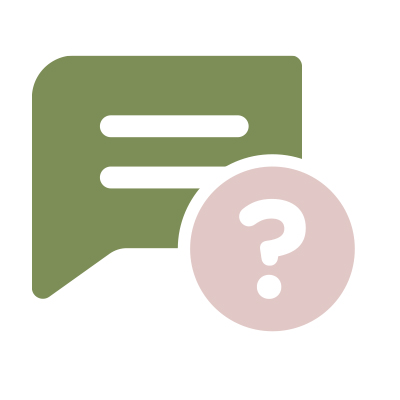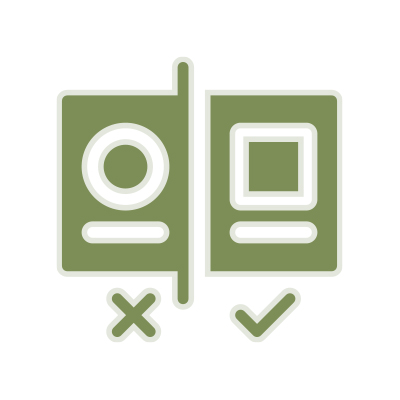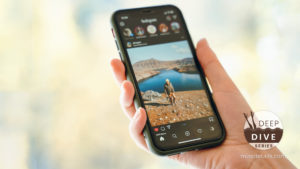
Welcome back to the Deep Dive Series on brand building. Hopefully you’ve already read our introduction to this five-part series as well as the second installment, which covers the initial groundwork you need to do as an entrepreneur, CEO, CMO, or marketing manager, whether you’re building a brand-new business or pivoting within an existing brand.
If you’ve read the first two installments, you know that building a brand is a lot like building a house. So far, we’ve picked out a great plot of land and dug just the right foundation: you’ve got a business plan ready to roll, and a mission and values to frame your brand around.
Quicklinks for the Full Deep Dive Series on Building a Brand
Part 1: Introduction | Part 2: Beginning Your Brand | 
Once you have completed your initial background work and settled on a smart business name and brand identity, it’s time to go from pouring the concrete in the foundation to letting it settle and putting up the first studs. Here’s a smart path to follow as your brand takes that next big step towards putting a roof over its frame.
Develop Core Foundational Tools + Documents
Even the smallest companies need to make sure they’re solidifying their brand idea as much as can be done at once.
The first step of bringing a brand to life involves putting pen to paper (metaphorically, at least) and creating some physical or virtual documents which clearly lay out all the elements that make up your brand. The following three documents are crucial tools for your entire company, and will help anybody who works with you to understand your brand’s values, communication, and style.

Messaging Guide
The messaging guide is strategic. It lays out your company’s foundation: its mission and vision, and the values that serve as pillars for your business and brand. This document will also define your audience, including demographic audience personas and sample phrases and messages to use with different populations. This is where you define your audience’s pain points and plan for how to address them.

Voice Guide
Similar to the messaging guide, the voice guide is about the written word. But while the messaging guide is about overall brand strategy; the voice guide sets the tone and cadence for your brand. It will include words and phrases to use and avoid, the emotions you want to achieve, and the attitude you’d like to portray. Is your brand friendly and approachable? Is it more professional or relaxed? These are all decisions you likely made when formulating your brand, but this is where you pick the specificities that resonate with those foundational tones.

Style Guide
This guide is where you address your visual brand standards. What fonts does your brand use? What’s the color scheme? What’s your logo, and why does it represent your brand? If you have multiple versions of your logo, this guide will describe when and where to use them, and explain why. Those who use your style guide need to understand the choices you made with each of these and why they reflect your brand. The guide will help marketing professionals create a visual image that matches the voice and message you’ve already set.
Some businesses and brands will put all three of these documents together in one overall Brand Voice + Messaging Guide, or a full set of Brand Standards. Some keep them separate, reserving some elements for copywriters and others for graphic designers, to simplify the documents. But they all need to work together and stay consistent across your entire brand. Remember that none of these documents are static — brands should always self-analyze to ensure that what’s in their defining documents still rings true, and make changes if necessary.
We’ve created our own version of the brand style guide known as the Brand Snapshot. It's a useful tool made for small businesses: a snapshot of your brand personality, a summary of the elements that the consumer uses to connect with your brand, developed by the Miss Details team. It incorporates company core values, business identity standards, stock image samples and reasoning, typography, design elements, accent colors, textures, and more. Overall, it combines the look and feel of a brand’s personality to communicate with web and other marketing vendors.

Don’t Agonize, Strategize

Even though you’re not a Bond villain, it’s time to come up with a master plan. Where are you going to focus your energy and resources? Will it be with a heavy social media push? If so, you’ll need different graphics and social media-friendly messaging that you can use across multiple platforms and that make sense for your brand and company. Maybe you’re going to have more of a physical presence, and need to place advertisements on billboards or radio stations.There’s no wrong strategy here, but before you move forward, make sure you know what you need to achieve the plan you lay out, and leave room in your budget to make adjustments based on feedback (more on that in a second).

Create Assets Based on Brand Foundational Documents
Now that you have your brand foundation set, your documents ready, and a strategy in place, it’s time to put it all together. This is where you take your logo and colors and create business cards and a website; where you use your brand voice and word bank to write web and sales copy; and where you create internal messaging documents to train your staff and anybody who might work and interact with your brand. If you have a creative team, this is when you give them the documents and strategy you’ve put together and let them flex their creative muscles, putting together the public-facing documents and media you’ve been planning all along.
Garner Feedback (But Don’t Take it Personally!)
Next, you’ll need to get opinions about your brand and marketing strategy. The key at this point is to stay open-minded: even the most brilliant marketers need feedback to fine-tune their ideas, and even the most creative teams can get an extra spark from something a consumer brings up during early product or service testing. There are several different ways to solicit critique and test different strategies, but here are a few tried-and-true methods:

A/B Testing
Do you want option A, or option B? It’s no acronym: that’s where A/B testing gets its name. Sometimes you’re stuck between two taglines, or you can’t tell which price point would be better in the market. The solution? Try both! If you can, make both offers: for instance, one price point in one city, and a different one in a city with comparable demographics. Maybe during a test or soft launch of your product, you’ll try different sales pitches to see if one gets more reaction than the other, or two different emails to compare click-through and open rates.
Social media can be a great place to perform A/B testing, as you can not only send out Tweets with different messages to test their response, but you can also even create multiple accounts with different messaging or branding to see how people react. As you can see, A/B testing is something you can continually experim

Focus Group
We’ve all seen plenty of examples of focus groups in popular media. There’s a group leader in what looks like a classroom of people, often with some business executives watching closely from behind a two-way mirror. And while it’s certainly amusing to watch examples of focus groups on television and in the movies, they serve as useful tools for brands approaching their launch point.
The average focus group can run anywhere from $4,000 to $12,000, which is a good chunk of change. But if you can afford it, that’s money that can save you more in the long run. You might hear feedback in your focus group that would improve your packaging, focus your messaging, or help you better understand your demographics. Those tweaks in your messaging before you launch can be the difference between success and struggle.

Survey
Surveys can be a great middle ground between focus groups and A/B testing. They allow you to present several different ideas or options to a group of people, in a format that (hopefully) only costs them a few minutes of their time (for longer surveys, it’s smart to offer a launch deal or discount). A solid survey includes several key features:
- Control questions (to exclude people who just select ‘A’ for every answer)
- Demographic questions (understanding data on your potential customers)
- Brand questions (the most important questions that you’re really interested in)
You can conduct surveys in person, if you’re confident enough to approach strangers and ask for a minute of their time. More likely, you can send your survey out via a mailing list or post it on social media. These might not get you the most scientific results, but they can still provide valuable insights to help you craft your launch strategy and branding decisions.

The Launch
You’ve got your foundational documents and a team that understands your brand, its voice, its message, and its goals. You’ve got assets ready to roll and an initial strategy, both of which you’ve market-tested with a mix of success and useful feedback. Now it’s time to go public: to push your website live, start using your social media channels (or build on pre-launch momentum), and start selling your product or promoting your service.
If your launch is a rebranding or re-launch, you also need to reach out to your current customers. They need to understand why this is happening, and how it will affect them. Reassurance and reinforcement through various channels — blog posts, emails, snail-mail, and social media — will help them more quickly adapt to the change and stay loyal to your business.
That doesn’t mean your branding journey is done: in fact, you’re only halfway there. In the next installment of this Deep Dive series, we’ll discuss how to keep your brand going post-launch, and how important it is to never let your branding fall by the wayside. Until then, if you’re thinking about a brand launch, a brand re-launch, or are in the middle of one of those two, consider how much feedback and critique you’ve gotten along the way. Have you tested your brand or concept out on anybody? How can you give yourself a better chance of being successful? If you can answer these questions, you’ll be better off for it.
Don’t want to miss out on our articles and insights?
Sign up for the Miss Details newsletter today.
Learn More with our Deep Dive Series
About Miss Details
Founded by Tanya Gagnon in 2004, Miss Details is a full-service branding and design firm which helps entrepreneurs and companies launch, adjust and reinvent key aspects of their branding and business marketing strategy. With a background in all aspects of interior and experiential design and a passion for data-backed design, Tanya leads the Miss Details team to guide her clients through everything from a refreshed website to a full rebranding, helping them put the pieces together to create a consistent, authentic, unique brand image.



